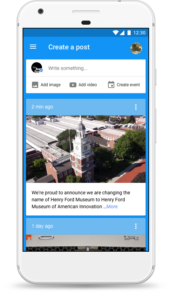How To Use Google My Business Posts
Tips for creating an effective Google My Business Post:
- Although the copy limit is 300 words, only the first 100 words will show at first. Make these words count!
- Use eye-catching imagery. This will be the most prominent feature of your post, so make sure it stands out. Any image smaller than 250×250 pixels won’t be accepted.
- Add a call to action button and link to the most relevant page for the post.
- Track links accurately with a UTM tracking code. GMB provide post insights (views and clicks), but often these don’t reflect traffic from posts seen in Google Analytics.
- Make your post an event. Posts are automatically taken down after one week, keep your post live for longer by setting start and end dates to match your promotion.

What Impact Do Google Posts Have?
As a relatively new addition to Google My Business, their impact on local rankings is still being tested. A case study from Search Engine Land, looking at two businesses in different sectors, found mild ranking increases to both when they began to publish Google Posts weekly.
Promoting offers using Google My Business Posts does appear to have an impact on conversion rate. When testing on a restaurant’s GMB profile, users that visited the site via posts showing current offers at the venue had a high conversion rate than traffic that entered through the ‘website’ button on the listing.
Taking only a few minutes to set up, Google posts are a great way to showcase your latest offerings and news to customers, giving them extra incentive to visit your site and a one-click path to converting. If you’re not using them already, start today.


